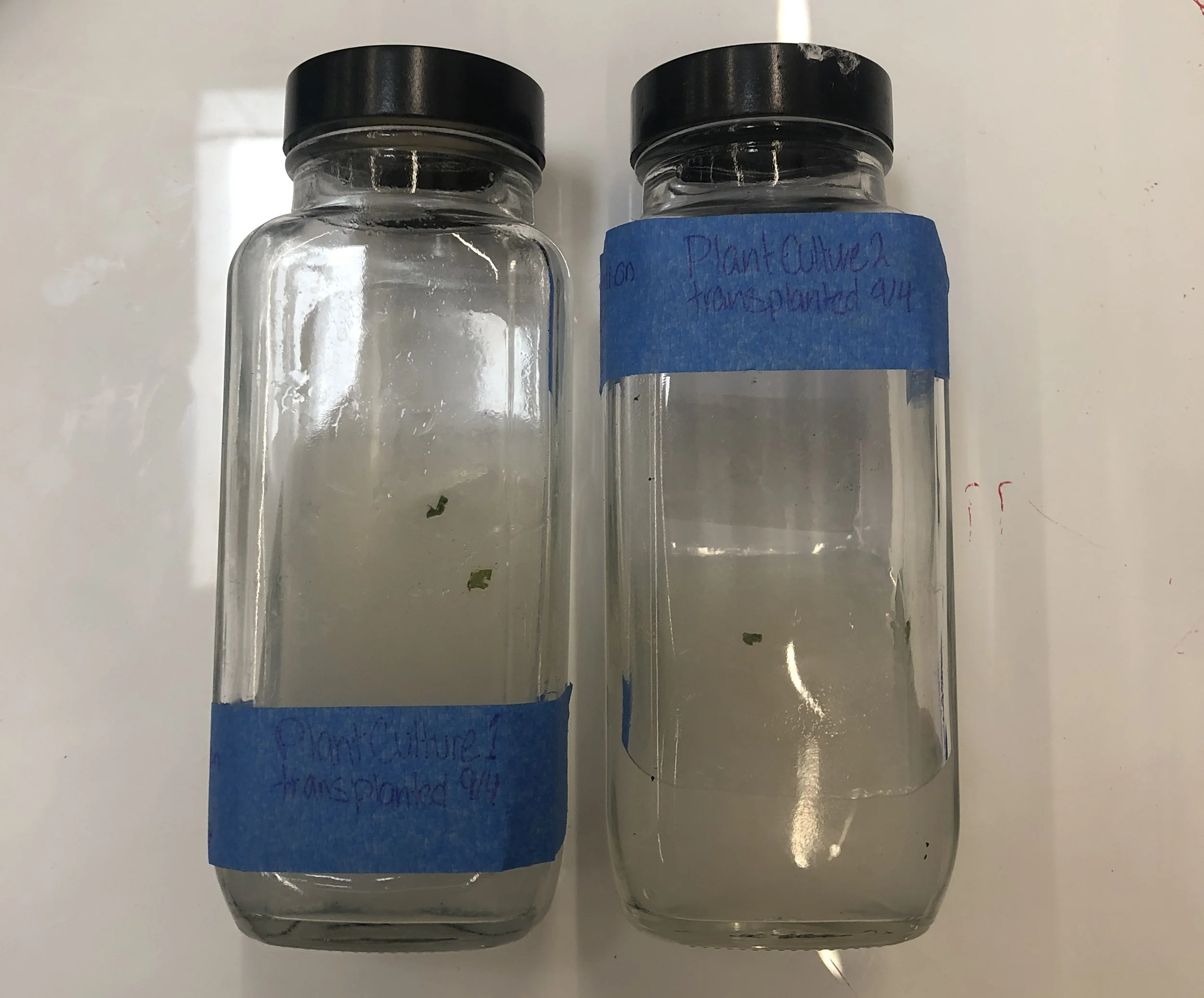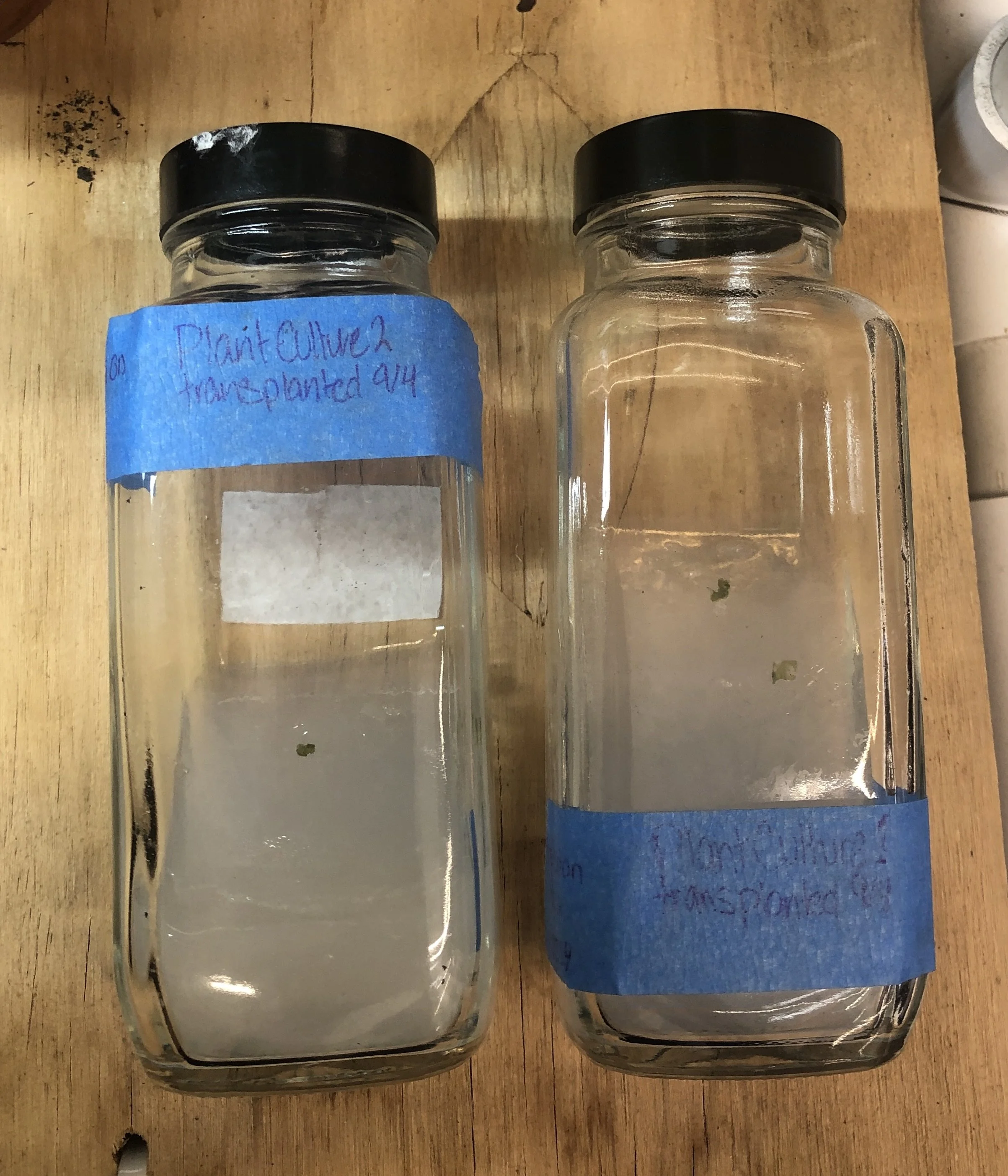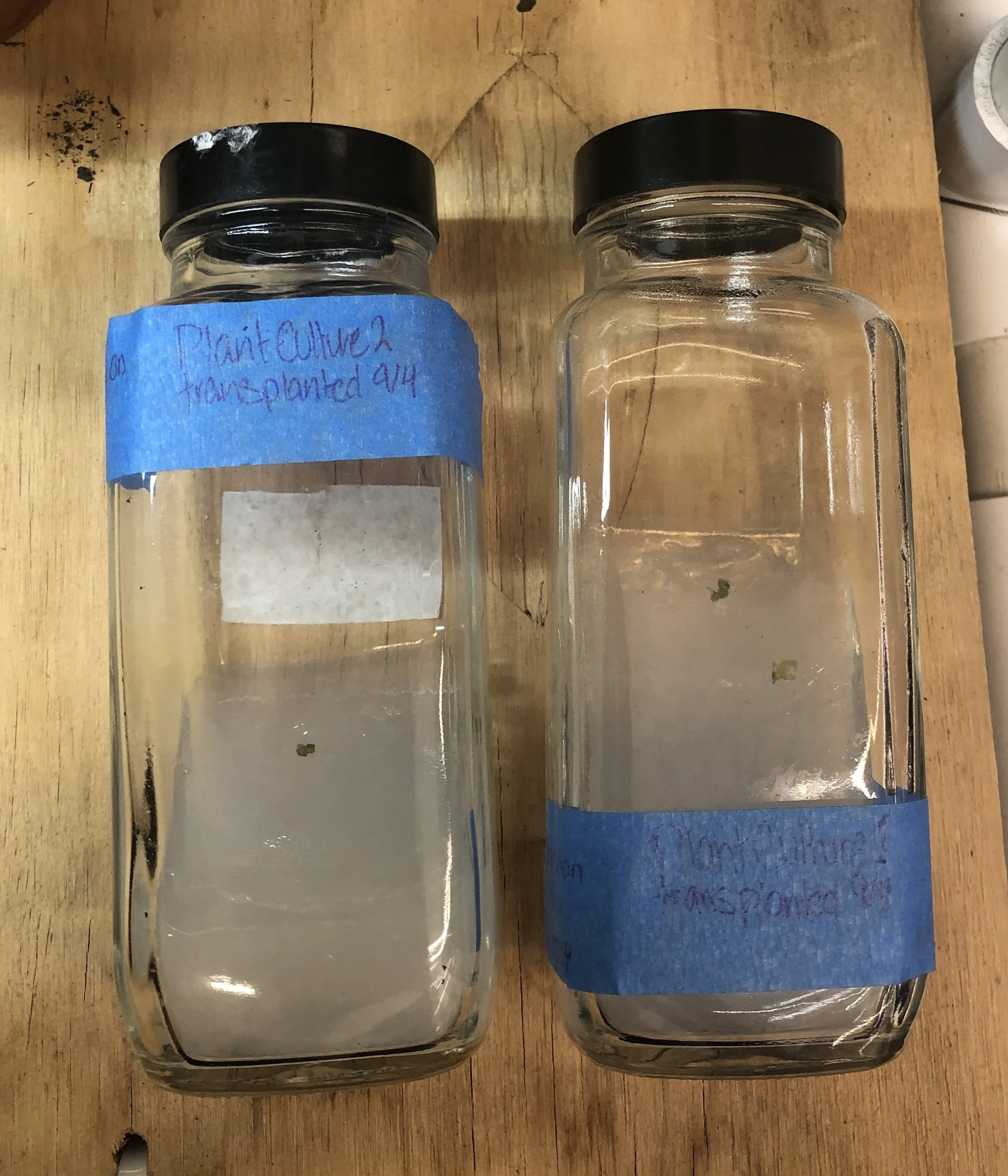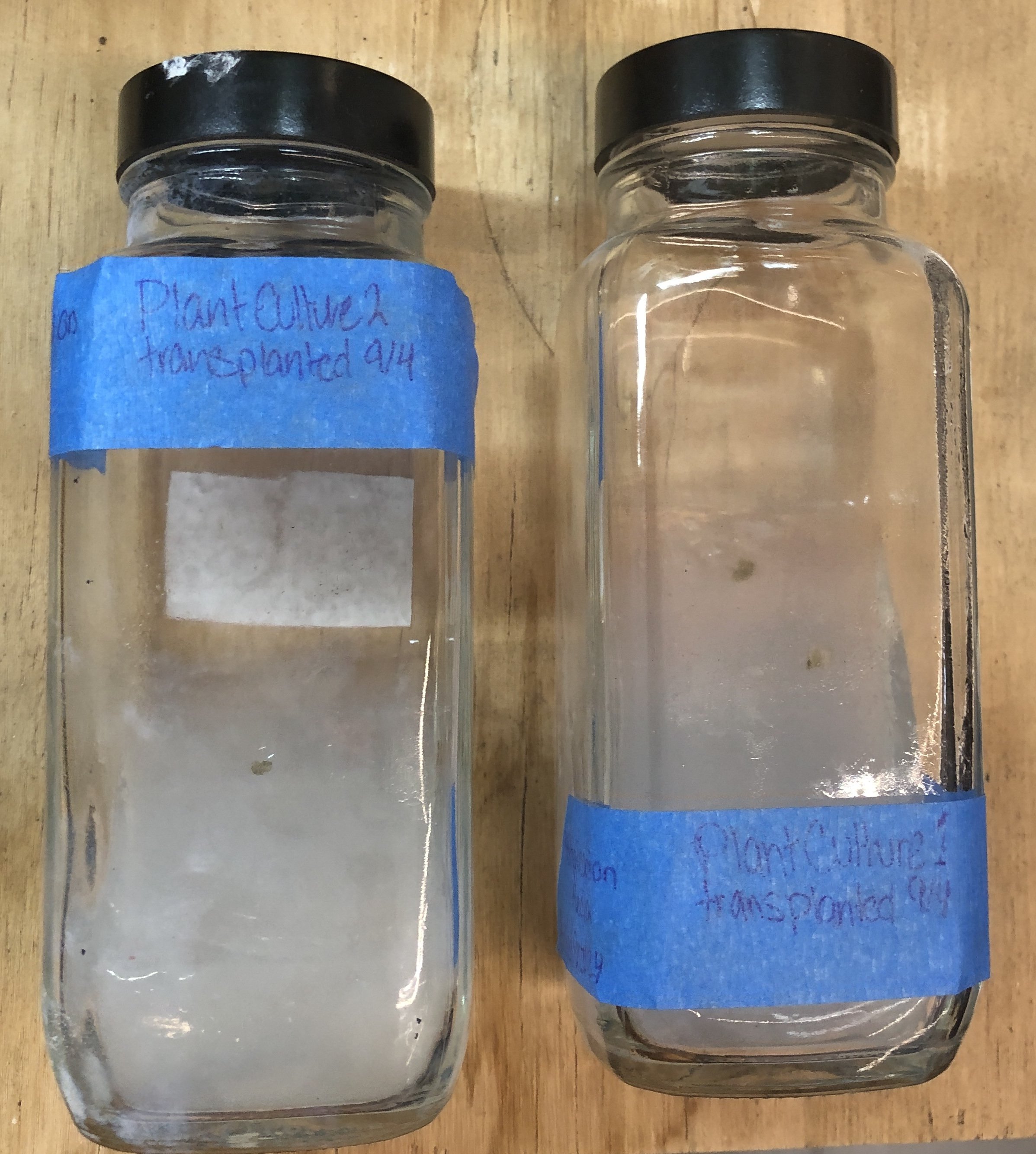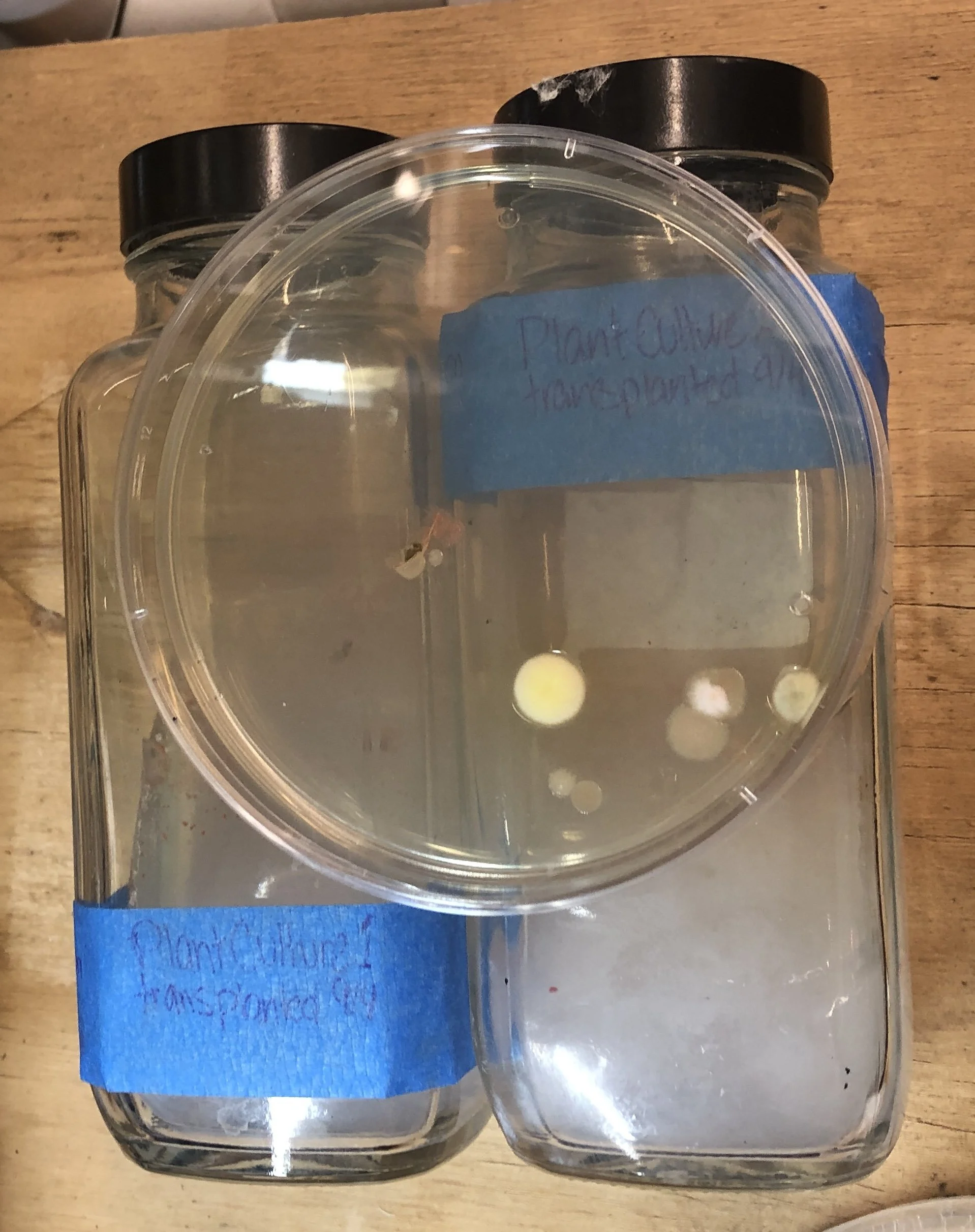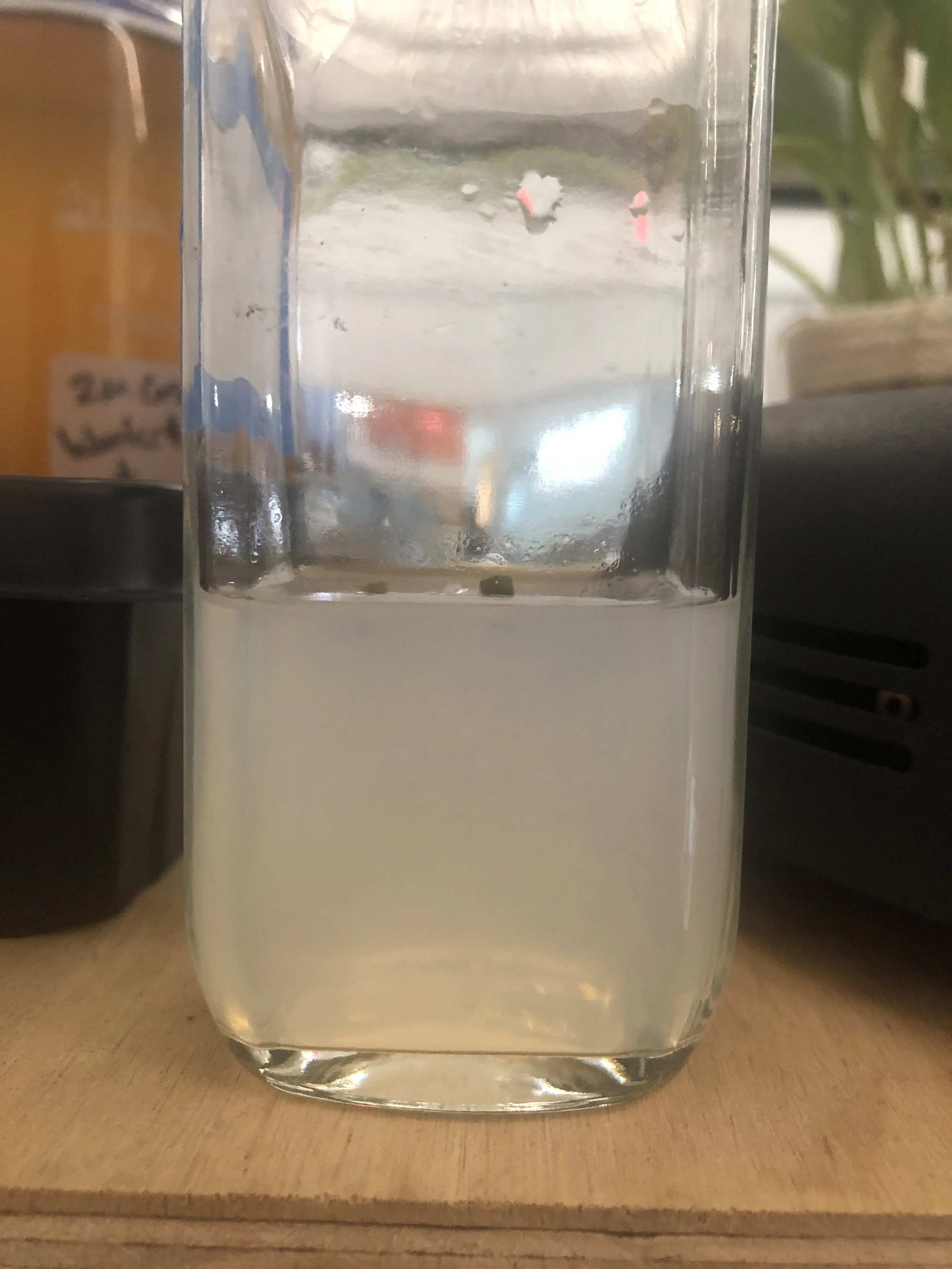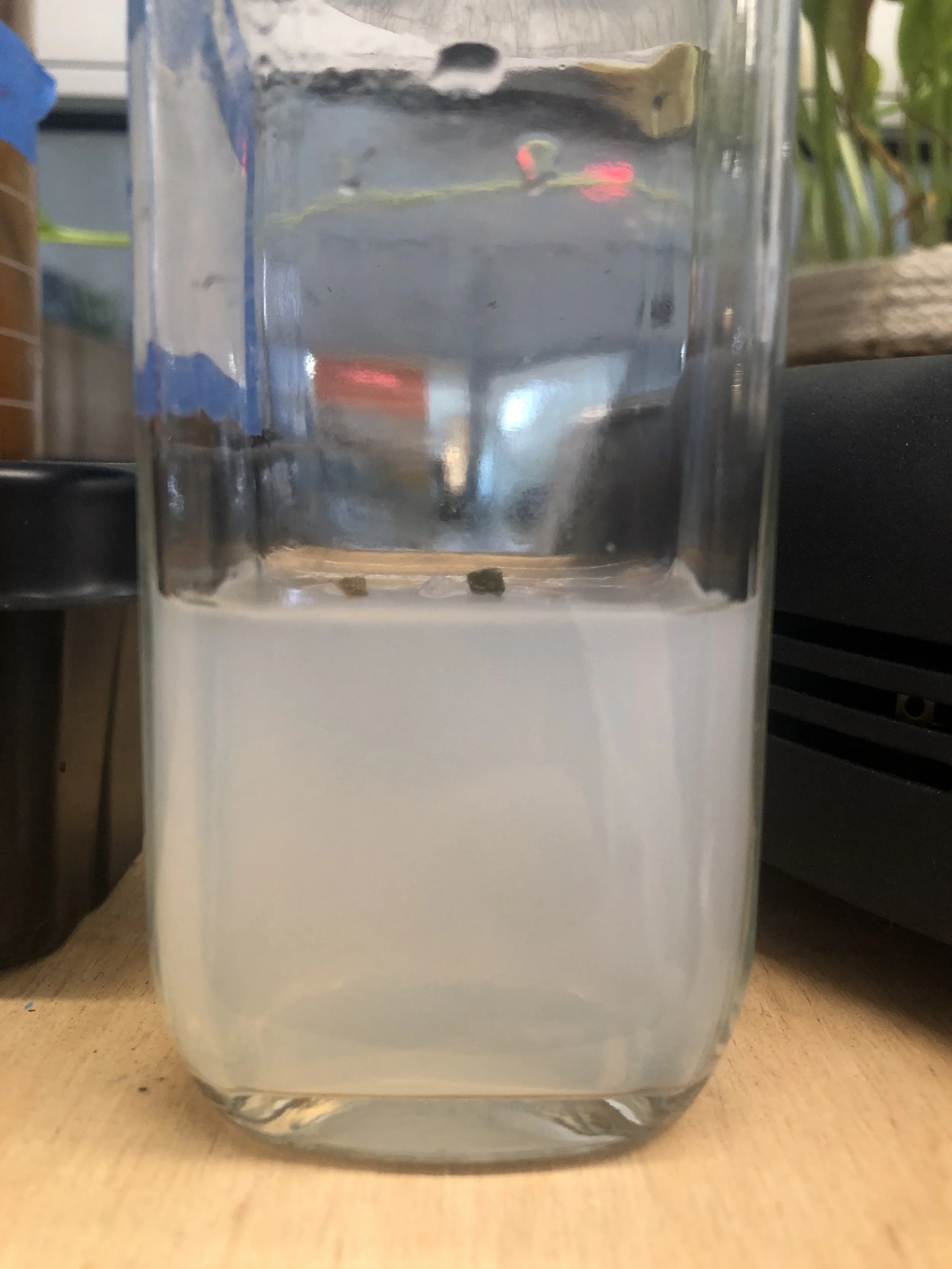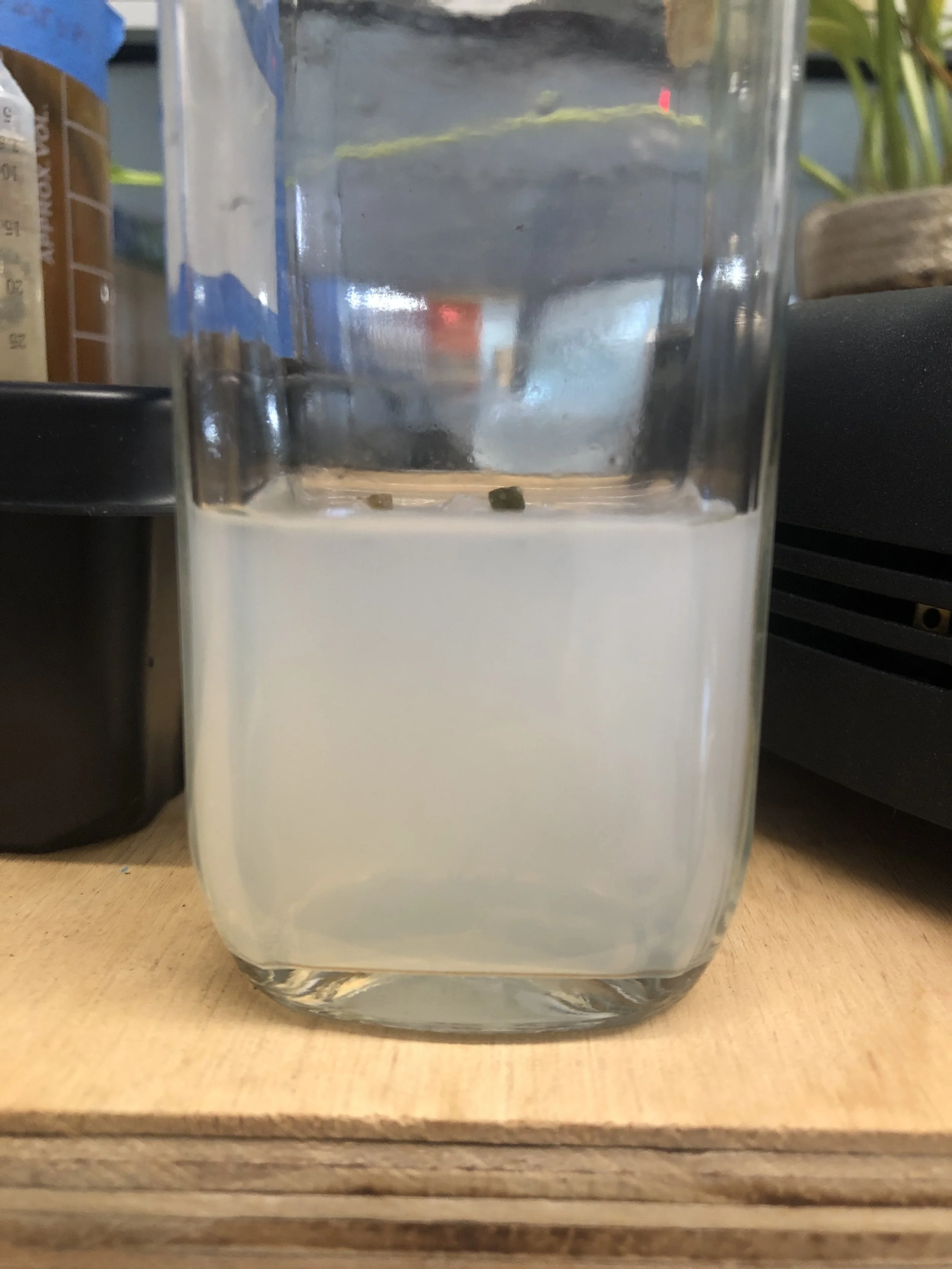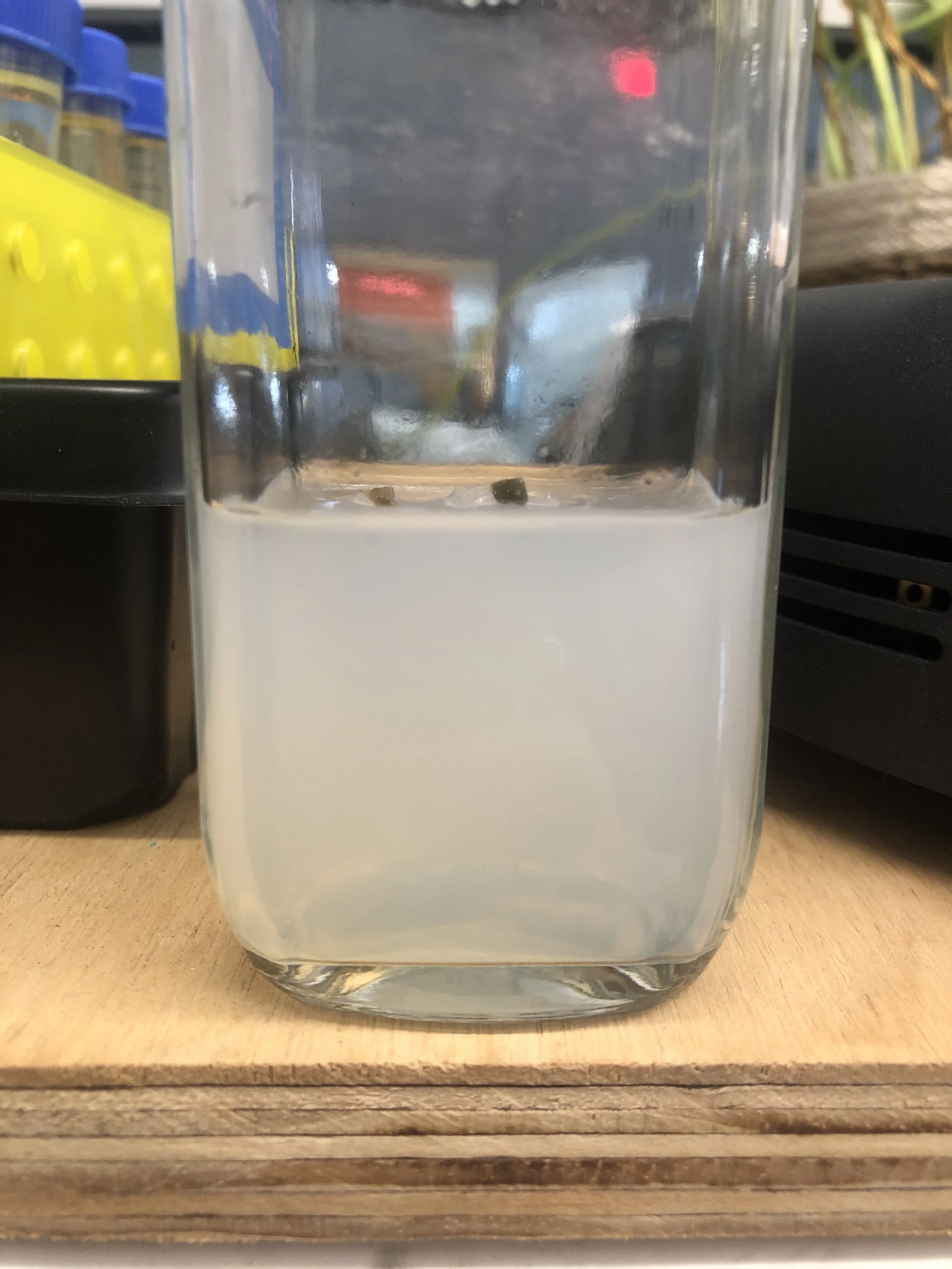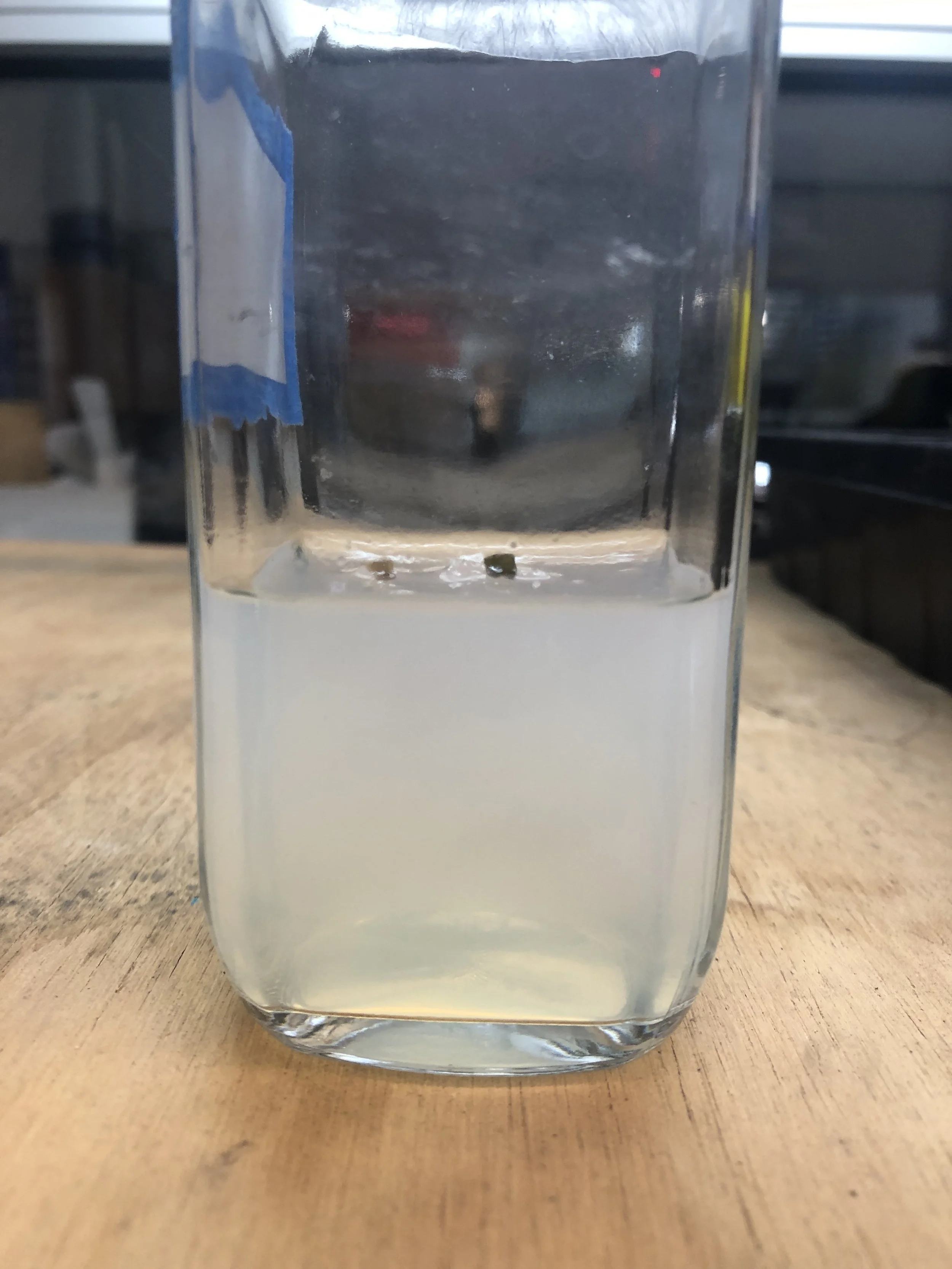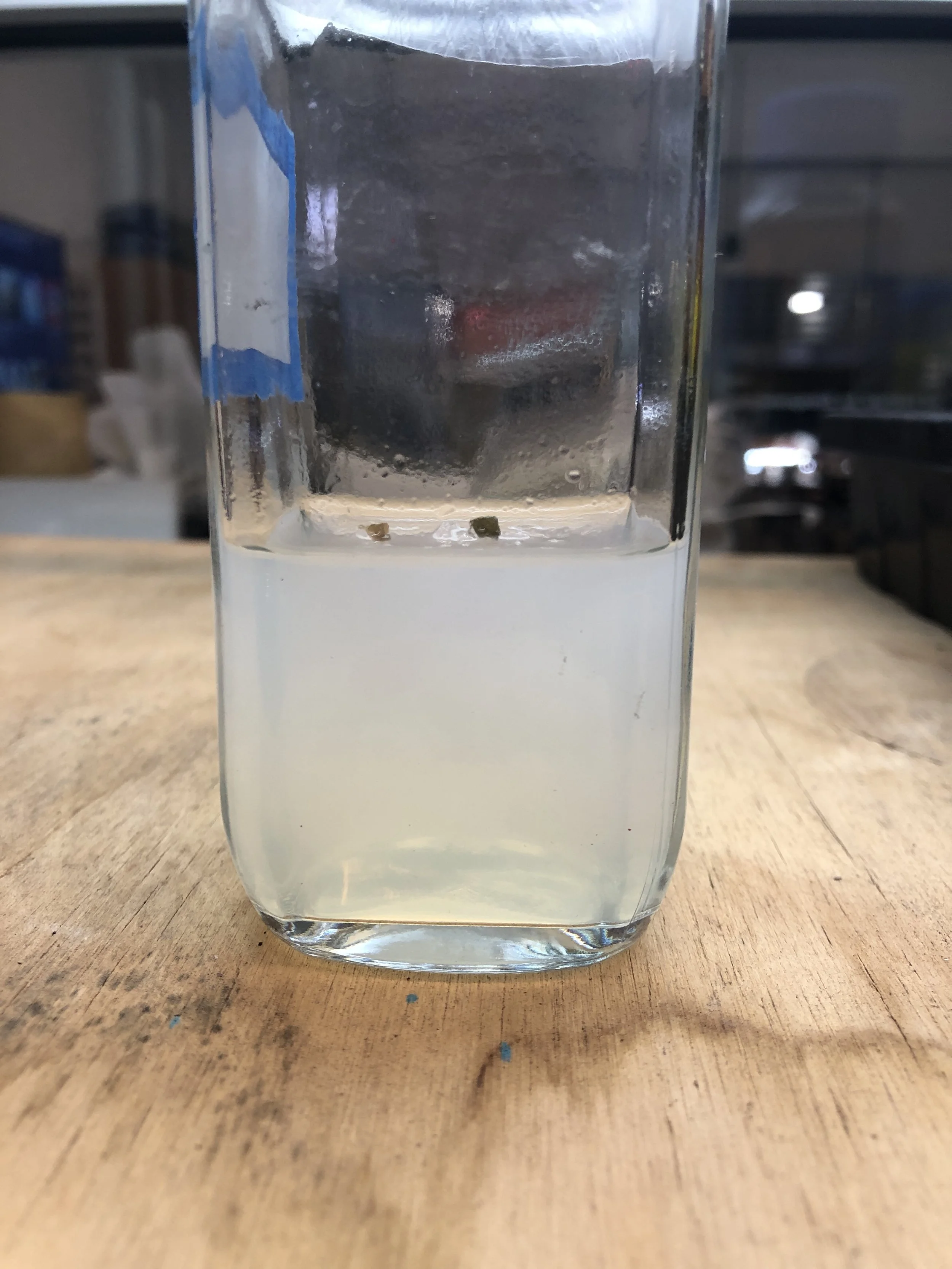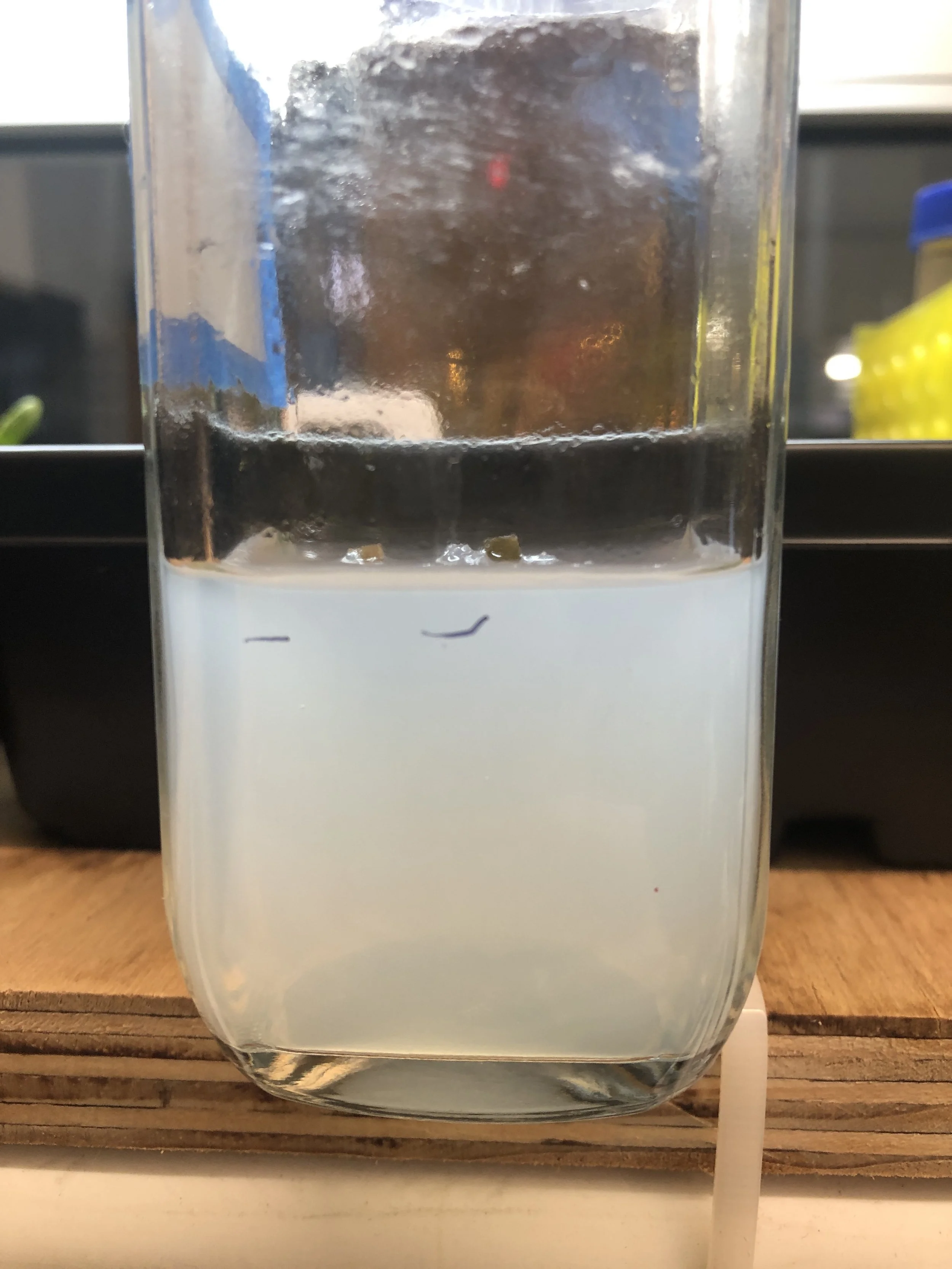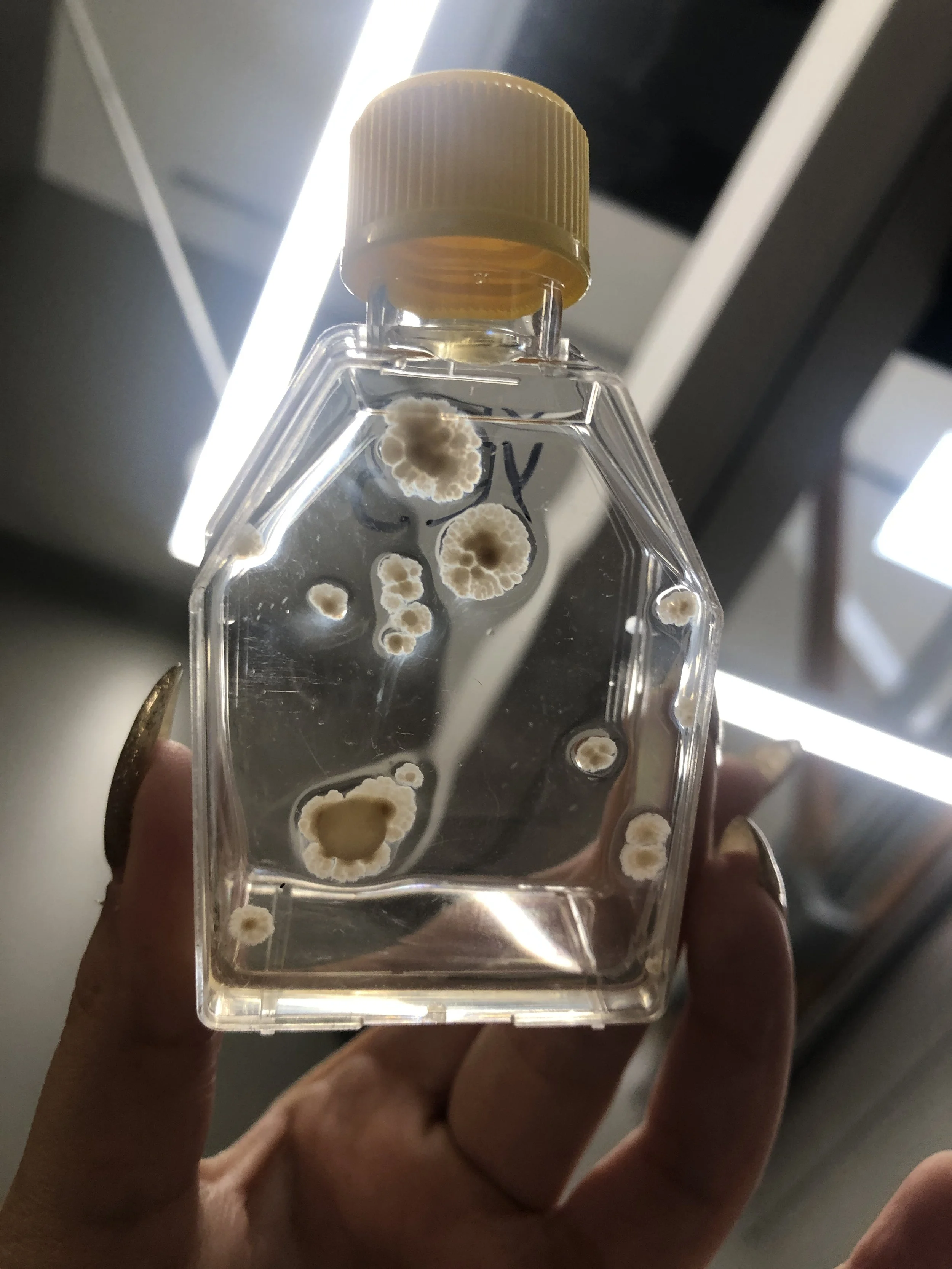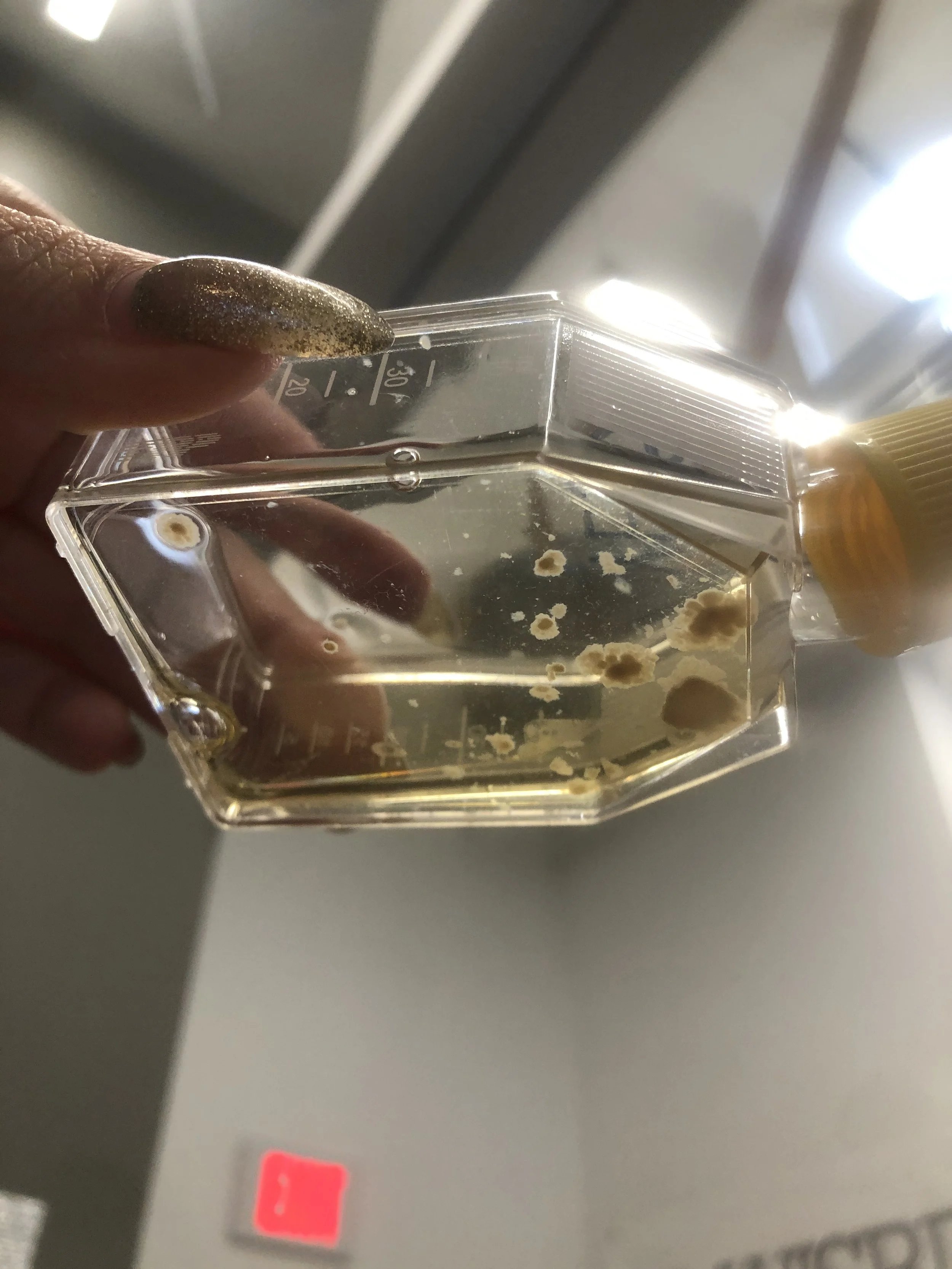Tissue Cultures
Abnormal Female Sex Hormones Level Effect on Tumor Development

Scientific Background

Hormones Receptors
Hormone receptors are proteins found on the surface, in the cytoplasm, or the nucleus of target cells. Specifically, estrogen receptors (ER) are found in tissues like the female reproductive tract, breasts, bone, brain, liver, colon, skin, and salivary gland. Progesterone receptors (PR) are found in the breasts, brain, pancreas, testicles, hypothalamic-pituitary-ovarian (HPO) axis, and fatty tissue.

Researcher Profile
How did I become interested in S.T.E.M.?
I discovered my passion for S.T.E.M. through a combination of factors a little later in life than expected. My interest in social justice, with a focus on women's health, led me to explore the intersection of science and culture. My personal experience with Polycystic Ovary Syndrome (PCOS) also ignited my curiosity to understand the biological aspects of health and wellness. Additionally, taking my first human biology course in 10th grade was a pivotal moment that solidified my enthusiasm for the S.T.E.M. fields. These experiences collectively fueled my desire to pursue further education and contribute to the advancement of scientific knowledge in the realm of women's health and beyond.
What areas do I hope to study in WISRD and beyond?
As I look ahead to my studies in WISRD and beyond, I aim to delve into various important areas related to the female biological experience. This includes an in-depth exploration of cancers that predominantly affect women, such as gynecological and breast cancers, and the issues stemming from female sex hormones. I am particularly interested in shedding light on problems historically overlooked in women, as well as understanding the profound impact of childbirth on the female body, encompassing aspects such as labor, nursing, menopause, and menstrual cycles.
What questions am I interested in exploring?
How do high levels of female sex hormones affect cancer development?
〰️
Why is Estrogen receptor positive (ER+) breast cancer three times more likely in black women?
〰️
How can period blood be used as a biomarker for disease?
〰️
What is the most effective method of "natural" pain reduction during childbirth?
〰️
To what extent can the estrobolome control hormone-related diseases with the right treatment?
〰️
How do high levels of female sex hormones affect cancer development? 〰️ Why is Estrogen receptor positive (ER+) breast cancer three times more likely in black women? 〰️ How can period blood be used as a biomarker for disease? 〰️ What is the most effective method of "natural" pain reduction during childbirth? 〰️ To what extent can the estrobolome control hormone-related diseases with the right treatment? 〰️

Plant Culture Updates (9/4 - 9/23)

Plant Culture Updates (11/8 - ongoing)

Cell Culture Updates

Journal Entries:
2023 - 2024
-
Over Thanksgiving Break, I determined four hormones I want to further research before testing them on the HeLa cells. All four hormones increase dramatically during pregnancy. The goal of researching female sex hormones is to find a correlation between abnormal hormone changes and cancer. Today, I worked on my website and started my poster, which is due on December 6th. My goal for the rest of class is to further research the four hormones related to pregnancy and see where else they increase or decrease throughout life.
-
For the past couple of weeks, I have been reading the article The Effects of Sex Hormones on the Growth of HeLa Tumor Nodules in Male and Female Mice (C. R. Franks, et al., 1974). This article contains a documented interaction with HeLa and exogenous sex hormones. After not receiving an email from The Henrietta Lacks Initiative, I decided to email The Henrietta Lacks Foundation to see if I could get a response. After creating my first poster, I feel I have a better understanding of the experiment I am going to conduct. I want to continue doing research on HeLa cells and their connection to sex hormones and add some of the information I put on my poster to my webpage.
-
Unfortunately, right now, we are unable to work with HeLa Cells in our lab at school. This means we need to find a new cell culture to experiment on. Mouse cells are used in science because of their genetic and systemic similarities to humans. As of right now, I want to use Murine Vaginal Epithelial Cells. These cells are a part of the lower female reproductive tract (LFRT) and have hormone-signaling proteins (ESR1) that regulate estrogen and controls cellular differentiation for vaginal cells. As for next steps, I am going to work on my proposal for the WISRD board and use the proposal to figure out all the details of my experiment.
-
I have finished my project proposal, and I am definitely more confident in this experiment's logistics. The only things I want to confirm with Megan. The two main questions are the medium and the hormones. The medium just depends on whether the tissue culture comes with a medium already. My hormone question requires a conversation with Megan.
-
Here is an update on what I have been up to these past couple months. I was able to get my project approved by the board and have created a short list of the materials I need. We received an assay machine along with supplies to practice the protocol.
As of right now, I have just read the protocol and done research on how each step in the process affect one another. I have designed a laser-cut version of a model of the ELISA flow. For my poster this semester, I am going to be working with Ivy and Parker to create a poster all about quantitative biological data analysis.
-
So, last week was poster night, and I think it went really well. Over the weekend, I researched plant tissue culture for epithelial cells. I found some key facts, and then, in A Block, I found a kit we could use. We would use African-violet tissue, which is very common. I am also going to try out for the WISRD board PR position, so today I am going to create my portfolio.
-
Today, we started boiling the agar in preparation for tomorrow's start of our plant tissue culture. I will continue this process through both of my blocks today.
-
Today, during my first period of WISRD, Parker and I started the plant tissue culture together. We completed the initiation steps, collecting the leaves and rinsing them in a diluted bleach solution and then ethanol. After some research, I decided I didn’t want to leave the leaves in an empty petri dish, so I continued the protocol. This involved cutting the leaves and inserting them in the multiplication medium. I am a little worried about contamination and the culture not receiving enough light. We have more leaves, so Parker and I might do another before summer.
2024 - 2025
-
Ok so, welcome back to my page. Over the summer, Megan secured a CO2 incubator and has been working to get me HeLa cells to continue my experiment with. As of right now, I am customizing my webpage. While doing this, I will review my research and refamiliarize myself with the material I am using. After that, I plan to conduct another plant tissue culture to practice my laboratory skills. At the very least, my goal by the end of the semester is to have all my materials ready to start my HeLa Tissue Culture Lab.
-
Today, I set up a "Researcher Profile" section for my webpage and started prepping for my plant tissue culture. I found the instructions on my Google Drive, and I plan to read over and annotate them, keeping in mind the pitfalls I ran into last semester. My plan for this experiment is to boil the agar on Thursday (8/29) and complete the tissue culture on Wednesday morning (9/4). This will hopefully allow the plants to grow, so I can show them off at Poster Night!
-
Change of plans: I boiled the agar today but I am thinking of keeping my Wednesday (9/4) date for the rest of the plant tissue culture. That way maybe Parker can join if she wants to.
-
Today, I am going to collect all the supplies that we will need for the plant tissue culture lab on Wednesday. I will also review the protocol to be able to commit it to memory. We are all set to perform our experiment on Tim's Chemistry Lab on September 4th
-
Today, I organized all the materials needed for our plant culture lab tomorrow. I don't want to keep running back and forth tomorrow morning so that I will take the box of supplies over to Tim's room today. I will also put a reminder in our Slack group and email Tim and Megan the specific details (time and date). I prepared a list of things I need to bring from home. Most are just about lab safety, like hair ties and close-toed shoes. For the rest of the class, I will review the protocol and technique guide.
-
Today, I did my plant tissue culture lab with Parker and Sophia. I think it went well. In WISRD, I am just going to make labels for the jar and set them up in the hydroponics chamber.
-
After being gone for a couple day, I check in on my plant tissue cultures. There seems to be little to no change, but they have been under a light lamp for four days straight. Last night, I created a cardboard cover for the jar to make it as easy as possible to transition from light to dark and reduce the possibility of contamination. In class, I continued to work on the cover and establish the protocol. Next class, I want to add magnets to the cover because I don't want to lose it or for it to get destroyed. I also want to put tin foil on the inside so it will be a blacked out as possible.
-
Today, I am still focused on my young plant cultures. Due to some changes in their light schedule, I did some research in plant tissue cultures relationship with light. I learned that a 8 hours off/16 hours on is a pretty normal schedule as light helps the callus (cell around a "wound") grow (https://plantcelltechnology.com/blogs/blog/blogrole-of-lights-in-plant-tissue-culture?srsltid=AfmBOoqAn4B6jKflPFFGL45O6883Avllf72PEFr-wUkS2JDTqekJvLVu). Changing light isn't ideal but I haven't found any information saying it can cause any major problems for the culture.
-
Ok, so my plant culture is chilling and we still don't have HeLa cells. For the next couple weeks, I want to focus on the science behind my project. The culmination of this will be a section of my webpage dedicated to education. Something else that could come out of this is finding other researchers to collaborate with.
Example of Estrogen Receptor: https://www.abcam.com/en-us/products/assay-kits/estrogen-receptor-transcription-factor-assay-kit-colorimetric-ab207203
-
My plan for today is to look into the history and concept of estrogen receptor +/- breast cancer to see how it could relate to cervical cancer. This should all be recorded on my website. Something else I could do is look for rat/mouse cervical cells for the first phase of my experiment. Links below:
https://www.cancer.gov/publications/dictionaries/cancer-terms/def/estrogen-receptor
-
Today, I set up the new WISRD Instagram, including profile picture, bio, and a plan for future posts. At the next board meeting I am going to get the bio approve as it is something that defines WISRD.
-
Today, I am going to continue my research on hormone receptors, and maybe look into something I can do at Dark Matter Day. Over the next couple weeks, I want to create a map of estrogen (and maybe progesterone) signaling so I can better under what need to happen for my experiment to mean anything.
Links:
-
Ok, we have a couple things on the docket this week. First thing, I think I have figured out what I am going to do from my Dark Matter Day booth. I will have the children make edible DNA out of candy (https://hessunacademy.com/edible-dna-model/). I still need to work out the kinks and practice creating one myself. The second item on my list is finding out what that pink bacteria(?) is growing in our plant culture (https://pubmed.ncbi.nlm.nih.gov/24177557/). I have come to the conclusion that the bacteria is likely Methylohacterium mesophilicum. Before putting it under the microscope I want to make sure I will not be releasing something potentially dangerous into the air. My third mini-project is drawing a diagram of ER and PR cycles, which I will include next to my research.
-
Today, I looked at the pink bacteria and the organisms growing in our tissue culture under a microscope. I got no new information from this expect that fact that the organisms growing in our tissue culture probably are fungal. I started working on figuring out the ER signaling cycle. So far, I have been going off of this link: https://www.ncbi.nlm.nih.gov/pmc/articles/PMC4210253/#:~:text=Direct%20genomic%20signaling%20pathway%20is,promoting%20gene%20expression%20(18). I have broken down the cycle down into 4 steps: estrogen binding to receptors, dimerization and translocation, binding to estrogen response elements (EREs), and transcriptional activation. What I want to work on next time is under the vocabulary used and the different kinds of cycles; genomic and non-genomic, and indirect and direct.
-
So, today I connected to the official WISRD Instagram (https://www.instagram.com/wisrd/). I can't find the improved bio I wrote so I am going to have to write a new one. I don't have a plan for post yet, but I think I am going to start with a countdown to Dark Matter Day. I think something I am going to do next week is test out my Candy DNA model for Dark Matter Night. I found two examples of this activity one uses gummy bears and one uses gum drops. I want to try out both to see what is easier and looks the best. Here are the links: https://www.sciencebuddies.org/stem-activities/candy-DNA-model and https://www.mcstemacademy.org/edible-dna-model/.
-
Today, I will continue on my journey to figure out how cell react to estrogen and progesterone. Last week, I tried to use the iPads to take note. For now I think I am going to stick to taking notes on a Google Doc (https://docs.google.com/document/d/1NJHJxJ3UugXJuOfTmNNWTEQy6ZXu82XSuj_HqL5CX9k/edit?usp=sharing). I'll look back in my journal to see where I left off.
In regards to my role as PR manager, this week (preferably October 1st), I will release my first Instagram highlighting cool moments from last year's Dark Matter Day. Sort of like a hype up post, reminding people of all the fun they had last year. I'm still trying to figure out how to get photos of the labs that are not in my Block. I have yet to reach out to Taylor to get permission to create a Wildwood Linkedin because she doesn't really respond to email. I think I will have to corner her in person.
-
Ok, so I swabbed both the pink mold and the mold growing around our lone plant tissue culture. We decided to send our plates to Kapak Inc. Environmental Laboratory and should expect results back in a couple of weeks.
The first Instagram post about Dark Matter Day, I think, went very well. Good engagement and I didn't devalue the WISRD name.
In regards to my hormone research, for the rest of the class today, I will keep working through my notetaking document with the end goal of drawing a diagram of estrogen's signaling pathways. I'm a little nervous to do another plant tissue because it has been contaminated so many times. I also feel like I would be more comfortable starting to work with animal cells if I could successfully do a plant tissue culture.
-
Today, I did a couple of things. First, I worked on my poster for Dark Matter Day, which was difficult because I hadn't done the project yet. Once I do the activity, I believe I can fly through making my poster. This is also an opportunity for me to review DNA and RNA, as they often come up when studying hormone signaling pathways.
I also did the AI lab photo survey, which was a bit long and freaked me out. I didn't really like any of the photos which is why I didn't rate any more than a 6 out of 10.
Lastly, I checked in with my mold/bacteria/algae samples. I had put them in a dark drawer last Tuesday and just pulled them out today. The mold growing on the plant culture plate transplant completely took over the dish with a light grayish fuzz, while the pink bacteria didn't grow at all. I put them under the light to see if we could get some growth.
-
I’m kind of freaking out. So, this year so far, I have done an unsuccessful plant tissue culture and Dark Matter Day. Now, we have 50 days until Poster Night and I have just as much to show for my lab as last year.
I have semi-completed the application for ordering HeLa cells. I just need to get our Biosafety Officer’s (Tim) signature and our Legal Representative’s (Alberto) signature. Before I use these cells, I need to successfully complete a plant tissue culture and an animal tissue culture. Hopefully, I can get Parker to agree to do the lab next week. This should allow enough time for our culture to root.
-
Today, we got approved to start a WISRD LinkedIn page, which is very exciting. I am going to wait until Megan gets back to start it up, as I need access to her email. I am going to continue my research on ER and PR cycles, with the hope of working on this research over the weekend.
-
Today, I finalized my knowledge of direct genomic hormone signaling (https://docs.google.com/document/d/1NJHJxJ3UugXJuOfTmNNWTEQy6ZXu82XSuj_HqL5CX9k/edit?usp=sharing). I had a good talk with Megan about the science behind hormone signaling and she lead me to some cool sources such as this photo (file:///Users/giuliaprough/Desktop/1-s2.0-S0015028207043257-gr1.jpg). I also made the decision that working with HeLa cells might be too much for a high school setting, especially when we won’t get the cells until May.
-
Tomorrow, I will get ready for our plant tissue culture take three. This will involve setting up the bleach and alcohol concentrates and thinking through the procedure. Over the weekend, I want to finish my hormone receptor research and put it on my website. Today, I am trying to find rat/mouse cells that I can use for my animal tissue culture.
Links:
https://www.toxpath.org/docs/SSNDC/FemaleReproProliferativeRat.pdf
-
So my weekend plans didn’t go as planned. I didn’t really have time to finalize my hormone signaling research. I hope to complete this step before Poster Night.
On Friday, Parker and I were able to complete the third iteration of our plant tissue culture lab. Three days later and it looks pretty much the same. We decided to wrap the outside on the jar with parafilm since the lid has to be cracked to allow for gas exchange.
Today, I am going to continue my hunt for mouse cell I can use for my lab.
Cons for cervical cancer cells: Cervical cancer is difficult to study in the lab because most cases are caused by human papillomavirus (HPV), and there is no equivalent infection in mice. (https://medicine.washu.edu/news/cutting-off-cervical-cancers-fuel-supply-stymies-tumors/#:~:text=One%20cell%20line%20was%20wiped,no%20equivalent%20infection%20in%20mice.)
-
Reading this: https://www.pnas.org/doi/10.1073/pnas.0911436106
-
Ok, so today is kind of a slow Monday for me. I checked out my plant tissue culture. It looks ok. One of the explants is turning brown, but the one we left the stalk on seems to be ok. I looked at our last tissue culture and it took 12 days for bad changes to become apparent, so I am keeping an eye out on that.
-
Ok, so I talked with Megan and here is what we came up with: I am going to continue my project using animal cells. I have started to think of using rabbit cells instead because they have the potential to be infected with HIV-1 (https://pubmed.ncbi.nlm.nih.gov/2556312/) which typically is a human-designated disease. The basis of my project is a little up in the air but I think I still what to test what different levels of hormones do to cervical cells. This could also include using antagonists to see what inhibited the absorption of estrogen and progesterone do (https://www.pnas.org/doi/10.1073/pnas.0911436106).
Cells: https://www.creative-bioarray.com/rabbit-cervical-epithelial-cells-csc-c5210s-item-46437.htm
-
After looking at the storage instructions, I have concluded I will order my cell before we leave for winter break.
Cells: https://www.creative-bioarray.com/rabbit-cervical-epithelial-cells-csc-c5210s-item-46437.htm
ELISA Kits: https://www.lsbio.com/elisakits/rabbit-er-alpha-estrogen-receptor-sandwich-elisa-elisa-kit-ls-f43655/43655
-
Today, I inquired about the rabbit cell and they are super expensive like $4000. I want to talk to Tim and figure out how to store them. I am holding out on buying them until I figure this out.
-
Over the last couple of weeks, I have gone from almost getting my cells to start my experimentation to basically starting back at square one. I can’t have any animal cells in school so the project I have created can no longer happen. Megan suggested looking for another lab to conduct the experiment, but I don’t think I can justify spending over $4000 on cells we can’t access easily especially when I am leaving next semester.
Right now I am looking into options that involve bacteria and this idea of the “estrobolome.” These are the sources I have found:
-
So I have continued to keep going down the gut route for my project next semester. Today, I kept doing research and learning basic terms to help me build my project. The key terms I studied today were β-glucuronidase (the enzyme that breaks down estrogen in the gut), deconjugates (the disruption of an alternating sequence of double or triple bonds in a chemical compound), and the estrus cycle (the cyclical pattern of ovarian activity).
-
Back from winter break. I explored a couple ideas on how to continue my project. I think I have concluded that I don’t want to have to say “vagina” 50 times next poster session. So, I have decided to continue with the idea I started with, except with yeast cells and a YES (yeast estrogen screen) assay. I still want to try to mess with the estrogen levels, but I think I will have to use isoflavones. I don’t think I will start for a couple weeks just to make sure I know what I am doing.
Links:
https://www.aniara.com/PROD/an32-233-y.html
-
https://www.thermofisher.com/order/catalog/product/211677
https://pubmed.ncbi.nlm.nih.gov/8593858/
Today, I looked at how to storage my assay kit.
-
Today, I started to examine our CO2 incubator. After looking inside, I began to question if I could clean the rust that had accumulated.
Here are my sources (minus one very helpful reddit post):
-
So, not much has changed in the past couple weeks. We did order the YES kit and the strain of yeast which should get here in a couple weeks. I want to be as ready as I can when everything gets here, so I have been getting the incubator ready and gathering supplies. A couple things I need to collect are a rotating platform for the incubator and a couple different types of pipettes. I wish I had access to the full instructions so I could start studying it.
Links Below:
-
Today, I wanted to see how I might keep my yeast strain going after I graduate. The procedure seems pretty easy (knock on wood): https://pmc.ncbi.nlm.nih.gov/articles/PMC5908411/#B13. Now, the decision to make is whether or not I try to culture the yeast before I do the experiment. I have also been trying to find a rotating platform for the yeast because it needs to orbit. My current solution is putting in a magnetic stirrer and stirring platform.
-
I started today by looking into how to grow yeast and continue the line after the experiment. Potential protocol: https://kenanfellows.org/kfp-cp-sites/cp24/cp24/activity-3-lab-culturing-yeast-cells-media/index.html. I also checked in with Megan and the assay kit and yeast cells. They were supposed to be shipped today and are shipped FedEx Overnight Priority which I assume will get here quickly. So next, I looked into how to store the items when they get here.
-
-
Today, I started looking at the protocol for the lab. The supplies last one month so I plan to complete the lab before spring break. We will miss a lot of days due to conferences and President's Day. I will study the protocol outside of the class and figure out what I am going to need to collect. The lab will be done in Ann Marie’s classroom, and I want to enlist their help in growing my yeast cell after I leave (also looking into how I can create orbit motion).
-
Wow, it has been a long time since I have journaled. So, the initial assays were canceled because I didn’t see any growth within my cell culture. Now, after break, I want to check my culture, make sure it is healthy, and then complete my assay before poster session.
My first concern was the changing color of the medium. I do think I need to add/make more medium. Here is the quote I found from UNC School of Medicine: “If a culture is contaminated with aerobic bacteria, then the medium will become acidic and appear yellow.” (https://unclineberger.org/tissueculture/contaminant/bacteriacontam/#:~:text=Characteristics%20in%20mammalian%20cell%20cultures,recommend%20discarding%20contaminated%20cultures%20immediately.) All of the sources I looked at say that a sour smell is normal in a yeast culture.
-
Yesterday, I added more media to the yeast culture. I also emailed Ann Marie to see if I can finally do my lab on Monday and Tuesday during lunch.




